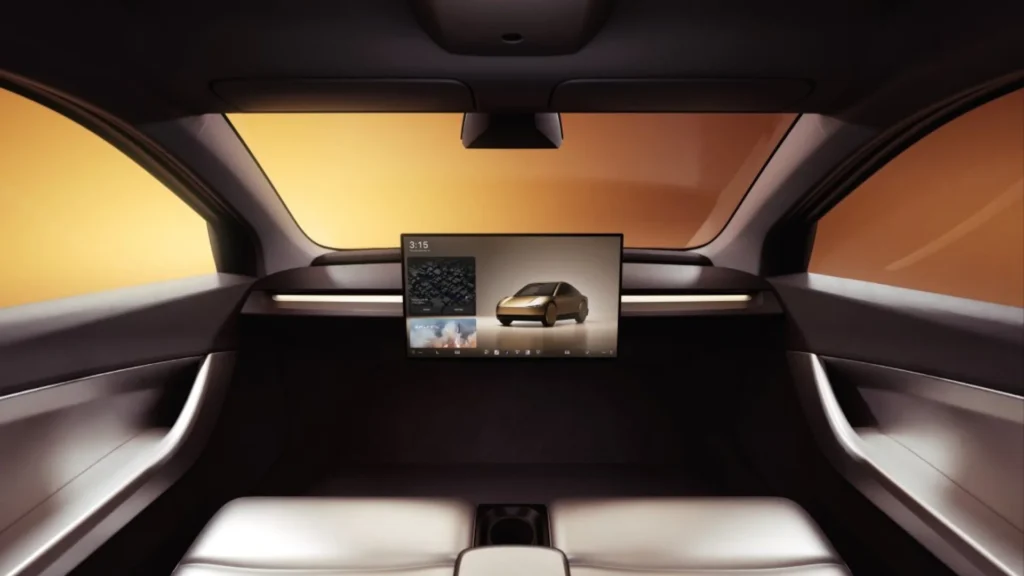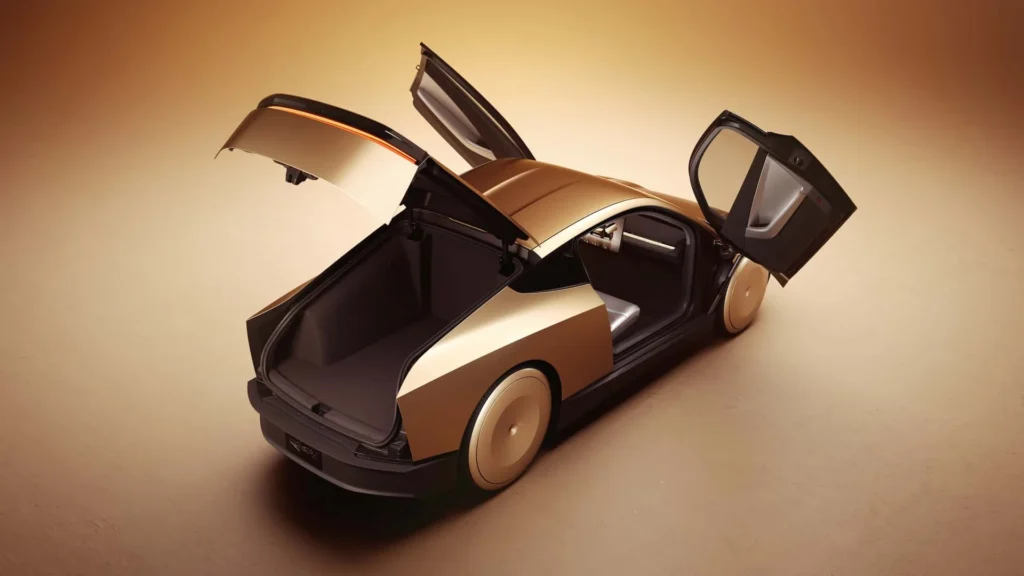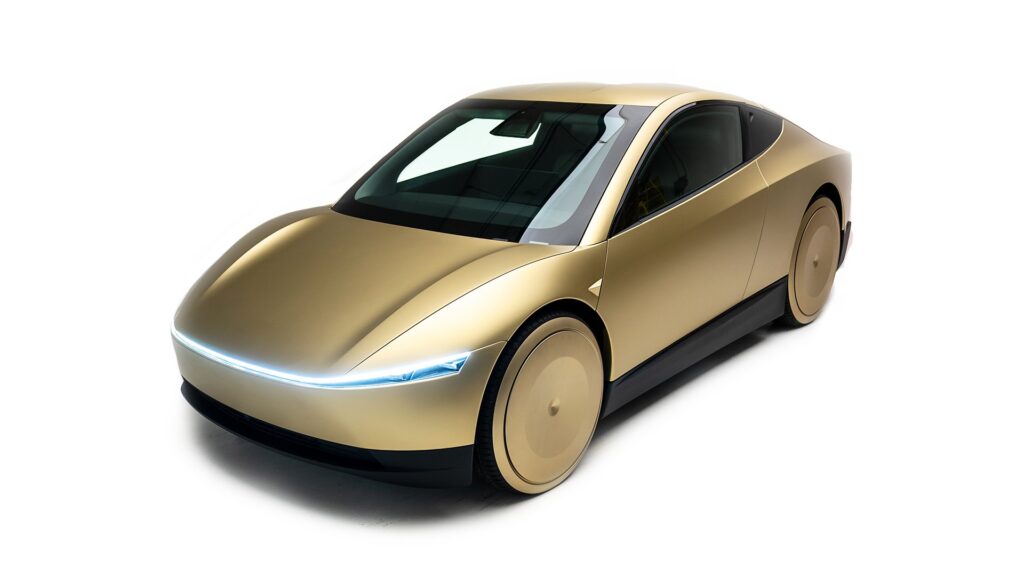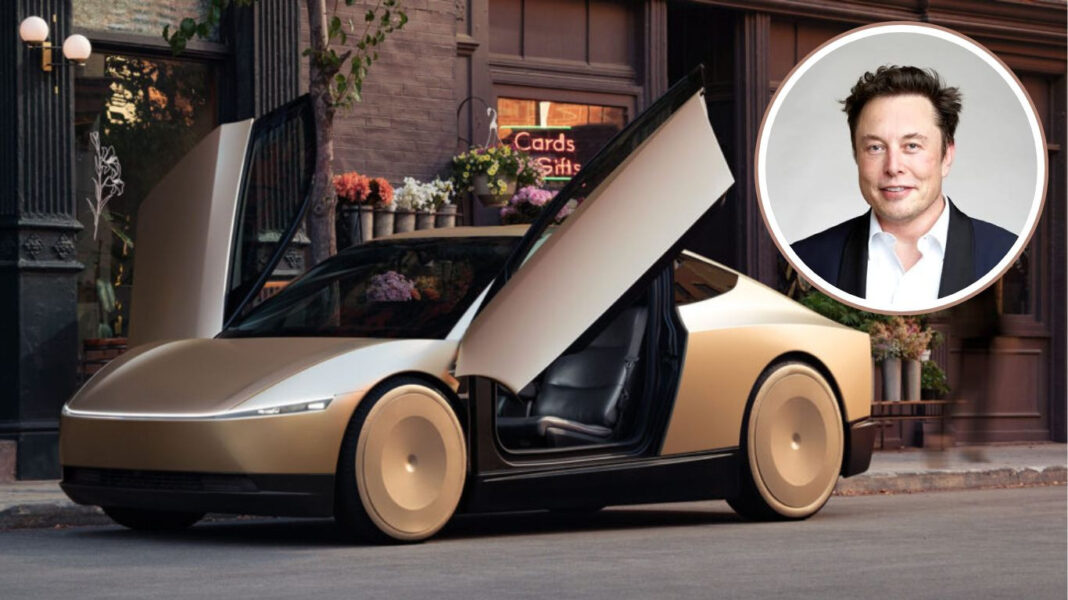Elon Musk has once again captured global attention with the official unveiling of Tesla’s long-anticipated Cybercab, a fully autonomous robotaxi, at VivaTech 2025 in Paris. The electric vehicle, designed without a steering wheel or pedals, is built entirely around Tesla’s Full Self-Driving (FSD) software and is being pitched as a game-changer in the ride-hailing and urban mobility sector.

The Cybercab’s futuristic design immediately stood out during its Paris debut. The vehicle features a sleek, compact, pod-like body with butterfly doors, a spacious passenger cabin, and a completely minimalist interior — no dashboard, steering wheel, or driver’s seat. Instead, the cabin is designed for passengers to relax or work while the vehicle handles all aspects of driving. It also comes equipped with wireless inductive charging, allowing it to recharge autonomously without human intervention, making it ideal for commercial fleet deployment.

Tesla announced plans to launch the Cybercab at a price point of under $30,000, a remarkably low cost for a fully autonomous vehicle. While production is expected to begin in 2026, industry insiders note the possibility of slight delays into 2027. Tesla aims to build the Cybercab at scale, targeting both individual users and ride-hailing services. The affordability of the car could significantly disrupt the global transportation industry, particularly in urban areas where shared mobility is increasingly favored.

Built on Tesla’s camera-first FSD system, which notably excludes radar or LiDAR, the Cybercab runs on Tesla’s new AI5 supercomputer chip, reportedly one of the most powerful AI chips ever developed for commercial vehicles. The robotaxi was demonstrated on a closed track at VivaTech, with selected media and attendees experiencing short autonomous test rides. Tesla also showcased a larger concept called the Robovan, which could accommodate up to 20 passengers, as well as its Optimus humanoid robots for support services.
Initial reactions to the Cybercab were mixed. Supporters praised the sleek look, affordability, and ambition behind Tesla’s push into driverless mobility. Critics, however, pointed out ongoing safety and regulatory concerns surrounding the FSD system. In the U.S., Tesla’s Full Self-Driving (FSD) remains under scrutiny from the National Highway Traffic Safety Administration (NHTSA), and many countries are likely to be slow to approve the Cybertruck for public roads, especially without any manual controls.

Despite the concerns, the unveiling of the Cybercab in Paris marks a significant milestone in Tesla’s roadmap. If successful, it could usher in a new era of affordable, scalable autonomous transportation. With its combination of cutting-edge AI, innovative design, and a clear vision for mobility, Tesla’s Cybercab may not just be a vehicle — it could be a symbol of the future.
Watch the video here




